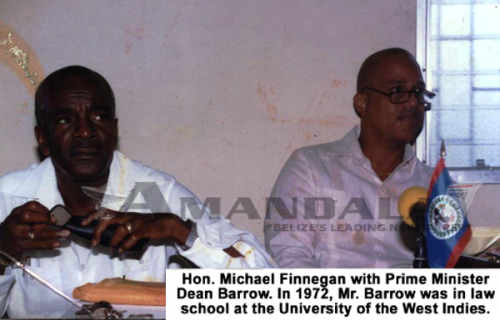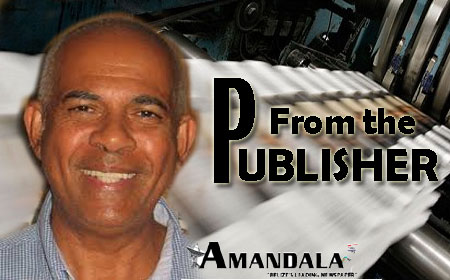In the UBAD movement and the UBAD Party, the Guatemalan claim was always a big issue. It was, in fact, less than a year after the sinister Seventeen Proposals were officially released that the United Black Association for Development (UBAD) was founded, on February 9, 1969.
It is said that modern party politics began in Belize with the establishment of the anti-colonialist People’s United Party (PUP) in September of 1950. The pro-British National Party (NP) was organized to fight the PUP in 1951. In 1958, the NP and a Honduran Independence Party (NIP), led by two former PUP leaders – Philip Goldson and Leigh Richardson, came together to form the National Independence Party (NIP), which lasted until September of 1973, when the United Democratic Party (UDP) was formed.
On the night of May 29, 1972, the young people of Belize City who were from PUP and NIP families were united as they had never been before, and have never been since, under the banner of the UBAD Party. But there were events which took place on that very same night which set the stage for the unraveling of the unity of the UBAD Party, basically along PUP and NIP lines.
I have waited almost 44 years to say a couple things publicly for the first time. The UBAD Party was marching to mark Pan-African Liberation Day, which is celebrated on May 25 of each year. In 1972, UBAD decided to march on May 29, so as to combine Pan-African Liberation Day with the honoring of the largest slave rebellion in the settlement of Belize’s history, word of which had first reached Belize Town from the Belize Old River on May 29, 1773.

I don’t remember for sure where the march began, most likely Courthouse Wharf, but I know we went over into the Northside, and I remember us coming up Cemetery Road/Orange Street entering Albert Street when night had already settled on Belize City. In front of the march was a police vehicle in which one Inspector Allen sat on the passenger’s side.
At that time the Guatemalan Consulate was upstairs of one of the buildings immediately across from James Brodies on Albert Street. An uproar began inside the march, with the target being the said Guatemalan Consulate. The young Michael Finnegan, who was a member of the UBAD Party, was near to me that night, and he was active both verbally and physically in the uproar.
The march continued all the way down Albert Street before turning into Regent Street, probably around the St. John’s Cathedral. The crowd was in an angry mood, and a lot of destruction of business windows took place all along Albert and Regent Streets. The police who were leading the march never intervened, to the best of my knowledge, but evidence in court trials later revealed that a police photographer, George Heusner, had become active with his camera by the time the march was reaching Courthouse Wharf, where we were supposed to have a rally.
As soon as I arrived at Courthouse, the Secretary of the UBAD Party, Norman “Imamu” Fairweather, approached me to declare that we were not going to rally. He was telling me, not asking me, but I felt he was stating the obvious. So I agreed with him. To me it was clear that we needed to retreat from the scene of the upheaval.

Norman, my younger brother Michael, and Edwardo Burns were arrested and charged the following day with attacks on various public buildings, including the Radio Belize transmitters which were then located on Princess Margaret Drive. As a result of the attacks, charges, and subsequent acquittals in the Supreme Court, Norman Fairweather became a total UBAD hero. Whatever happened after the march ended at Courthouse Wharf had not been planned or sanctioned by the UBAD Party executive, but we had to close ranks behind the accused. That was the absolute priority.
The story of how the UDP appeared on the scene to swallow up the NIP early in 1973 is a story which is important, in the first instance, because it marked the end of Mr. Goldson’s leadership of the Opposition. (He had gone to London to study law in January of 1971.) The UDP took a significantly different approach to the Guatemalan issue from the approach Mr. Goldson had taken during his years as NIP and Opposition Leader from 1961 to 1973. On formation in 1973, the UDP announced that the party would emphasize economic development. At the time, this was a pointed announcement, intended to let financiers know that the new party would not focus on the Guatemalan claim, as Mr. Goldson’s NIP had.
Now let us return to May 29, 1972. At what point the young Michael Finnegan had become unconditionally loyal to Dean Lindo, the Leader of the People’s Development Movement (PDM), only Mr. Finnegan can say. I personally believe it was already the case, on May 29, 1972, that Finnegan, then employed at Hofius Hardware, had become a Lindo man. Mr. Lindo, who had challenged Mr. Goldson for NIP leadership in May of 1969, formed the PDM after his NIP leadership challenge failed. He and the PDM had boycotted the December 1971 City Council election coalition of the NIP and the UBAD Party, but early in 1972 Mr. Lindo had begun defending various UBAD leaders, including myself, in Magistrate’s Court on different charges. He did all this legal work pro bono. Mr. Goldson, to repeat, was in London in 1972.
After Norman, my brother, and Burns, defended by Mr. Lindo, had been acquitted in Supreme Court in October of 1972, Norman toured Boston and New York City, making public appearances on radio and television on behalf of the UBAD Party. As Norman’s stature was growing in the party, elements in our executive from NIP backgrounds became more confident and openly began to challenge my leadership. This was how the UBAD Party entered 1973, with a fault line having emerged between those from different family political backgrounds, and it was along that fault line that UBAD divided and fell when the Rev. Gerald Fairweather began to organize the Unity Congress, precursor to the UDP, early in 1973.
In closing, I want to ask the Hon. Michael Finnegan what it is that has changed since 1972 in his perspective on the Guatemalan claim, or is it that his position today is derived from party loyalty. In a sense, the UDP may be considered the party of Mr. Goldson, his NIP being the largest party in the three-party coalition which comprised the UDP, although Mr. Goldson had founded the National Alliance for Belizean Rights (NABR) in 1991, and was still the NABR Leader at the time of his death in 2001. The UDP’s position in March of 2016 on the Sarstoon River situation is not what Mr. Goldson’s position would have been. I believe I can say this categorically.
Power to the people. Remember Danny. Big up, Wil.

